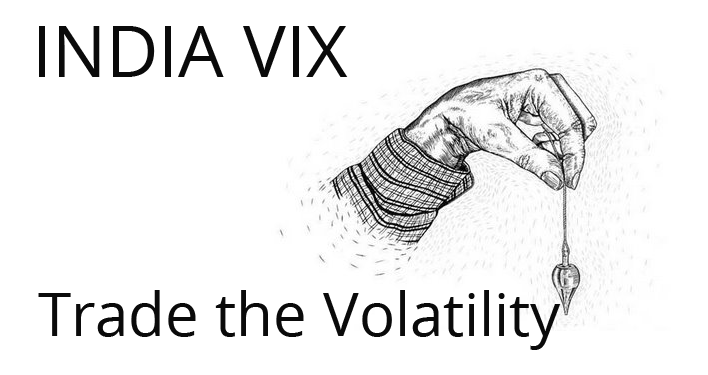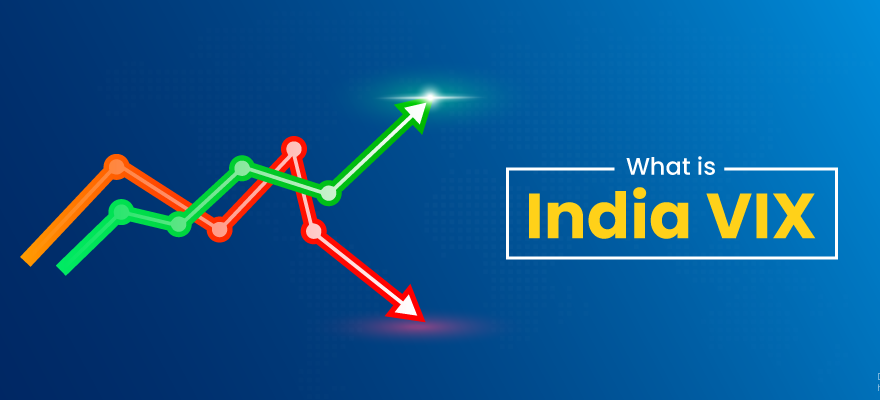What does India VIX indicate?
- 1 What does India VIX indicate?
- 1.1 Significance of India VIX:
- 1.2 Calculation of India VIX:
- 1.3 India VIX and Market Dynamics:
- 1.4 India VIX as a Risk Management Tool:
- 2 Conclusion:
- 2.1 FAQs:
- 2.1.1 What is India VIX?
- 2.1.2 How is India VIX calculated?
- 2.1.3 Why is India VIX important?
- 2.1.4 What does a high India VIX value indicate?
- 2.1.5 How does India VIX relate to market dynamics?
- 2.1.6 Can India VIX predict market movements?
- 2.1.7 How do investors use India VIX?
- 2.1.8 Are there derivatives based on India VIX?
- 2.1.9 Is India VIX the only indicator investors should rely on?
- 2.1.10 How does India VIX impact investment decisions?
- India VIX, or the India Volatility Index, measures the expected volatility in the Indian stock market over the next 30 days, known as the “fear gauge.”
- It’s calculated using NIFTY Index Option prices via the Black-Scholes Model, reflecting market expectations of future volatility.
- Investors use India VIX to assess market sentiment and adjust their investment strategies accordingly, particularly for risk management during turbulent times.
India VIX, short for the India Volatility Index, is a measure that indicates the stock market’s expectation of volatility over the coming 30-day period. It is often called the “fear gauge” or “fear index” of the Indian stock market. This index is based on the NIFTY Index Option prices. Understanding India VIX today is crucial for investors and traders in the Indian stock market, as it reflects the market’s volatility expectations, which can significantly influence investment decisions. The index is computed using the best bid and ask prices of NIFTY Index Options, considering the near and next-month expiry options.
What does India VIX indicate?
Significance of India VIX:
The India VIX is significant because it represents the market’s expectation of volatility, a critical factor in pricing stock options. A higher VIX value indicates that traders expect substantial changes in the NIFTY index, signalling a higher-risk environment. Conversely, a lower VIX value suggests expectations of minimal changes, indicating a more stable market. Investors and traders use the VIX to gauge market sentiment, with higher values often associated with fear or uncertainty and lower values with complacency or stability. Understanding VIX trends can help make informed portfolio management and risk assessment decisions.
Calculation of India VIX:
The calculation of India VIX involves a complex process using the Black-Scholes Model, a widely used option pricing method. The model considers the order book of NIFTY Options contracts to calculate the expected volatility. It uses the price of options, both calls and puts, across various strike prices. The computation involves averaging the weighted prices of out-of-the-money puts and calls, considering the time until expiration and the risk-free rate of return. This methodology ensures that the VIX reflects the market’s consensus on future volatility based on real-time option prices.
India VIX and Market Dynamics:
India VIX and market dynamics have an inverse relationship. When the stock market rises and investor confidence is high, the VIX tends to be low. During turbulent times, such as financial crises or geopolitical tensions, the VIX usually spikes, reflecting heightened market anxiety. This inverse relationship helps investors understand market sentiment and potential turns in market trends. For example, an unexpectedly high VIX reading could indicate that the market may be nearing the top. In contrast, a low but rising VIX might suggest increasing caution among investors, possibly foreshadowing a market downturn.
India VIX as a Risk Management Tool:
For investors and portfolio managers, India VIX is an essential risk management tool. By monitoring VIX levels, they can gauge market volatility and adjust their investment strategies accordingly. For example, a rising VIX could prompt investors to hedge their portfolios by investing in less volatile assets or using derivatives for protection. Additionally, VIX derivatives, such as futures and options, are available for trading on the National Stock Exchange (NSE), directly allowing investors to trade based on their volatility expectations. This can be particularly useful in portfolio diversification and managing market exposure during turbulent times.
India VIX is an essential indicator for understanding market volatility and investor sentiment in the Indian stock market. While it is a valuable tool for risk management, option pricing, and gauging market dynamics, it should not be used in isolation. Investors should know its limitations and use it alongside other indicators and analyses. As financial markets continue to evolve, the significance of understanding instruments like the Bank Nifty Index becomes increasingly essential for retail and institutional investors, aiding them in navigating the stock market’s complex and often turbulent waters.
Conclusion:
In conclusion, India VIX, as the “fear gauge” of the Indian stock market, plays a vital role in understanding market sentiment and managing investment risk. Its calculation based on NIFTY Index Option prices through the Black-Scholes Model provides investors with valuable insights into expected volatility over the coming month. By monitoring India’s VIX levels, investors can make informed decisions regarding portfolio management, risk assessment, and adjusting investment strategies based on market dynamics. However, while India VIX is an essential tool, it should be used with other indicators and analyses to understand the market comprehensively. As investors navigate the complexities of the stock market, understanding and interpreting India VIX trends remain crucial for successful investment outcomes.
FAQs:
What is India VIX?
India VIX is the India Volatility Index, indicating the expected volatility in the Indian stock market over the next 30 days.
How is India VIX calculated?
It’s calculated using the Black-Scholes Model, which considers NIFTY Index Option prices, strike prices, time until expiration, and the risk-free rate of return.
Why is India VIX important?
It’s crucial for investors as it reflects market sentiment and helps in pricing stock options, managing portfolios, and assessing risk.
What does a high India VIX value indicate?
A high value suggests higher expected volatility, signaling a riskier market environment with potential significant changes in the NIFTY index.
How does India VIX relate to market dynamics?
It has an inverse relationship with market trends; typically, a rising market corresponds to a low VIX, while a falling market or increased uncertainty leads to a higher VIX.
Can India VIX predict market movements?
While it can provide insights into market sentiment, it’s not a predictive tool but rather an indicator of expected volatility.
How do investors use India VIX?
Investors use it for risk management, adjusting investment strategies based on volatility expectations, and as a tool for portfolio diversification.
Are there derivatives based on India VIX?
Yes, derivatives like futures and options based on India VIX are available for trading on the National Stock Exchange (NSE).
Is India VIX the only indicator investors should rely on?
No, it should be used alongside other indicators and analyses for a comprehensive understanding of market dynamics.
How does India VIX impact investment decisions?
It influences investment decisions by providing insights into market sentiment, helping investors gauge risk and adjust their strategies accordingly.


















